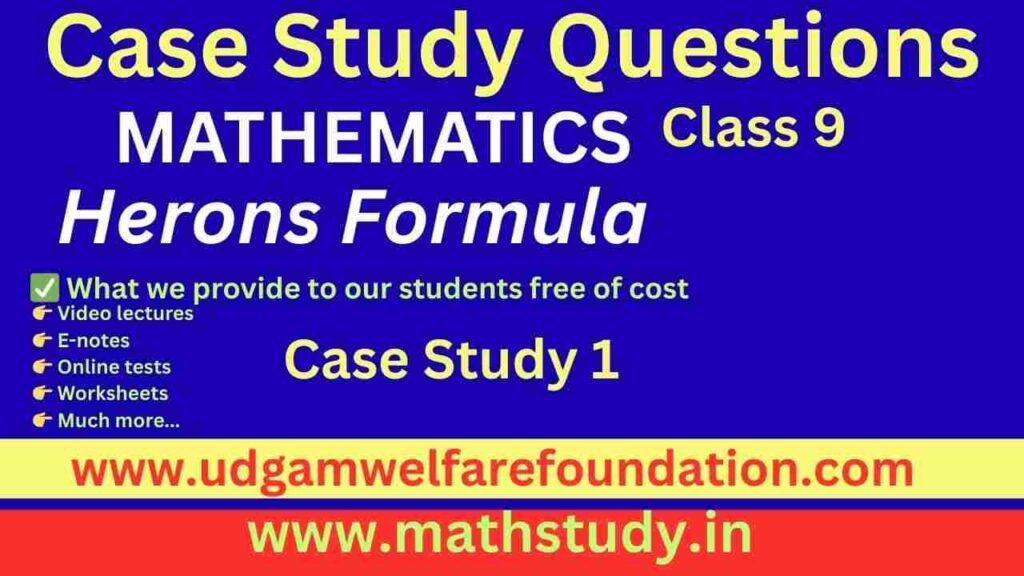Class 9 Maths Herons Formula Case Study
The class 9 maths herons formula case study is an important part of CBSE exam preparation. Students often practice herons formula case study questions class 9 that focus on real-life applications, such as land measurement or plot design. These practical problems are also available in class 9 maths case study herons formula pdf format for easy revision. Moreover, mastering herons formula word problems class 9 builds confidence for solving application-based questions in exams.
Applications and Practice Material
The cbse class 9 herons formula case study includes case study questions on herons formula class 9 with step-by-step solutions. Students should also try herons formula class 9 extra questions case study for more practice. Furthermore, herons formula application case study class 9 problems strengthen conceptual understanding. For thorough preparation, many resources provide maths case study questions class 9 herons formula and class 9 herons formula solved case study examples.
Class 9 Maths Herons Formula Case Study
These study materials guide learners through herons formula case study questions class 9 with clarity. Therefore, regular practice helps improve accuracy, speed, and exam performance.
Case Study on Heron’s Formula class 9 – 3
In designing a triangular solar-panel mounting frame that must exactly cover an irregular triangular roof section, architects need to compute the exact area and certain circle radii related to the triangle to size the mounting brackets and drainage collars. The triangular roof section has side measurements that are obtained from on-site laser scans but the vertical height to the peak is inaccessible due to obstructions. Hence, Heron’s formula is the natural method to determine the area from the three side lengths alone. This case study examines an applied situation where precision matters: the panel array must be cut to within \(0.5\%\) of the true area to ensure waterproofing seals fit correctly, and the inner collar (incircle) determines the size of a central drainage cone. Use Heron’s formula and related identities to compute area, inradius, and check feasibility constraints for bracket spacing.
Useful formulae / properties
\[s=\frac{a+b+c}{2},\qquad \Delta=\sqrt{s(s-a)(s-b)(s-c)}\] \[r=\frac{\Delta}{s}\qquad\text{(inradius)},\qquad R=\frac{abc}{4\Delta}\qquad\text{(circumradius)}\] \[\Delta=rs=\frac{abc}{4R}\qquad\text{(area identities used for cross-checks)}\]MCQ Questions
Quiz Results
Correct Answers: 0
Incorrect Answers: 0
Percentage Score: 0%

